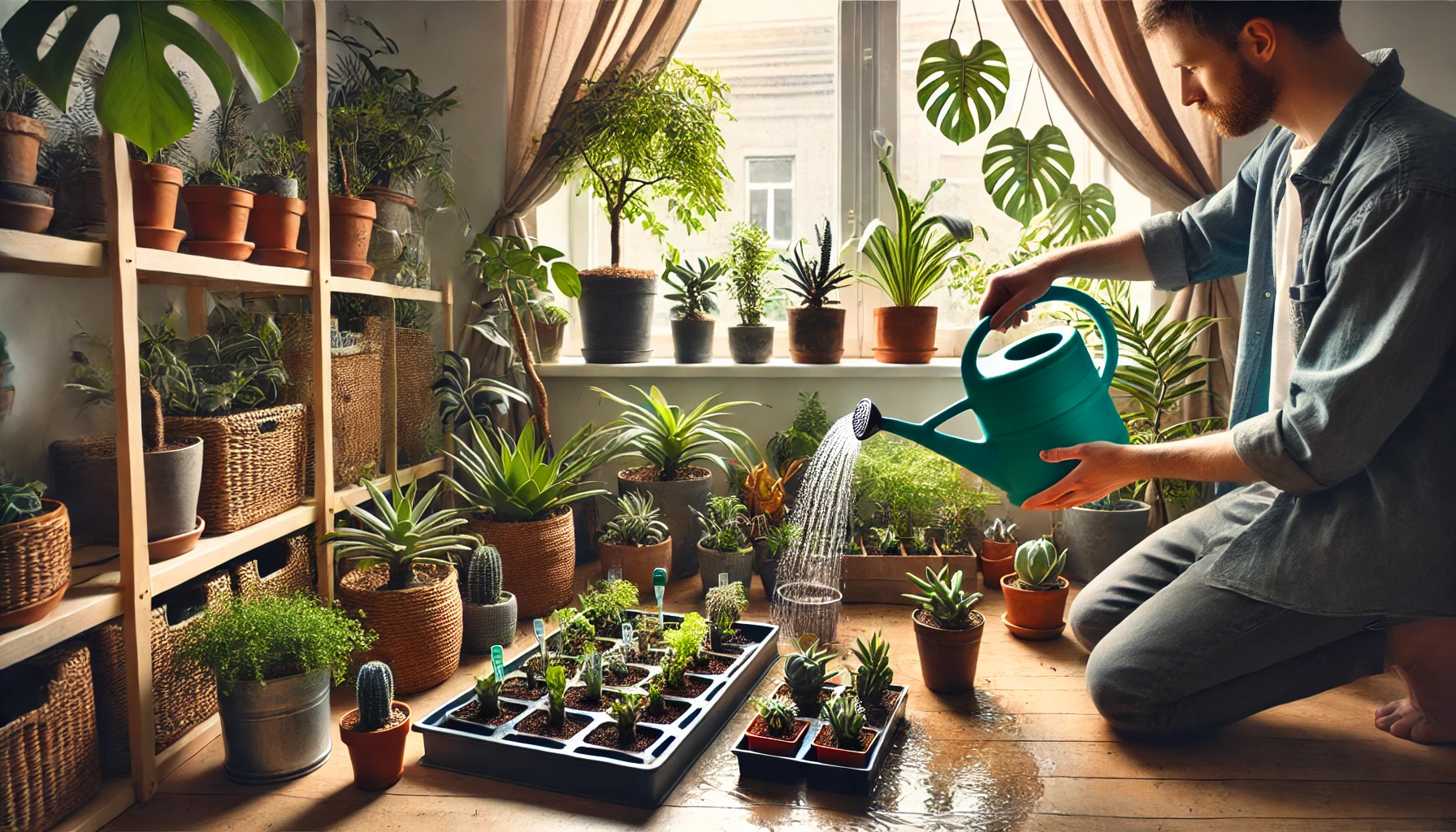Watering exotic plants may seem simple, but in small apartment settings, it can become a delicate balancing act. Overwatering is one of the most common causes of plant stress and death, especially in environments with limited airflow and humidity control. In this article, you’ll learn how to properly water your exotic plants without overdoing it—even in the smallest of spaces.
Why Overwatering Is a Big Problem in Apartments
In compact living environments, factors like reduced sunlight, lack of ventilation, and limited drainage can lead to excess moisture retention in the soil. This sets the stage for root rot, mold, pests, and leaf yellowing.
Many exotic plants originate from tropical climates where rain is followed by quick drying due to high temperatures and airflow. Without proper adaptation, apartment-dwelling plants can suffer from waterlogged soil.
Signs of Overwatering
Before diving into best practices, it’s important to recognize the warning signs of overwatering:
- Yellowing leaves
- Mushy or foul-smelling roots
- Mold on the soil surface
- Wilting despite wet soil
- Leaf drop or browning at the tips
These symptoms can easily be mistaken for underwatering, leading to more water—and more damage.
Know Your Plant’s Needs
Different exotic plants have different water requirements. For example:
- Calatheas and Alocasias need consistently moist (but not soggy) soil.
- Succulents and Snake Plants prefer soil to dry out completely between waterings.
- Orchids require specific watering techniques like soaking and quick drainage.
Research each plant’s native habitat and watering rhythm to provide care that mimics its natural conditions.
Use the Right Soil Mix
Watering issues are often rooted in soil composition. Well-draining soil allows excess water to escape and air to reach the roots.
Ideal Soil Characteristics:
- Loose and breathable
- Enriched with organic material
- Mixed with perlite, pumice, or coarse sand for drainage
Never use garden soil indoors—it’s too dense and retains water for too long.
Choose the Right Pot
The type of pot you use significantly impacts how water behaves in the root zone.
Best Potting Practices:
- Always use pots with drainage holes
- Avoid placing decorative pots directly on surfaces without a drip tray
- Opt for terracotta pots if overwatering is a concern—they’re porous and allow moisture to escape
Tip: If you want to use a decorative pot without holes, keep your plant in a plastic nursery pot inside it and remove the inner pot when watering.
Learn the Finger Test (and Other Tricks)
One of the easiest ways to check if it’s time to water is to feel the soil.
Try These Techniques:
- Finger test: Insert your finger about an inch into the soil. If it feels dry, it’s time to water.
- Moisture meter: A simple tool that gives instant feedback on soil moisture.
- Weight test: Lift the pot—dry soil is significantly lighter than wet soil.
Bottom Watering vs. Top Watering
Each method has benefits, especially in small spaces where spillage is a concern.
Top Watering:
- Mimics rainfall
- Helps flush salts and fertilizer buildup
- Easier for large plants
Be sure to let excess water drain freely. Never let plants sit in runoff.
Bottom Watering:
- Ideal for compact spaces and sensitive plants
- Encourages roots to grow downward
- Helps avoid pests and mold on the soil surface
How to do it: Place the pot in a shallow tray of water for 10–30 minutes, allowing it to soak up moisture from the bottom.
Use a Watering Schedule—But Stay Flexible
Routine is helpful, but overwatering often happens when plants are watered on a fixed schedule regardless of conditions.
Smart Watering Tips:
- Water less during winter when plant growth slows down.
- Use reminders to check rather than automatically water.
- Group plants with similar watering needs together.
Be Mindful of Your Environment
Small apartments may have microclimates. For example, plants near windows may dry out faster, while those in corners may stay moist longer.
Adjust Based on:
- Season
- Temperature
- Humidity
- Sun exposure
Final Thoughts: Water with Intention, Not Routine
Proper watering is less about frequency and more about observation and understanding. In small apartments, where environmental conditions can be less forgiving, it’s essential to create habits around checking soil moisture, using the right tools, and listening to your plants’ signals. With mindful watering, your exotic plants will flourish—and so will your confidence as a plant parent.
